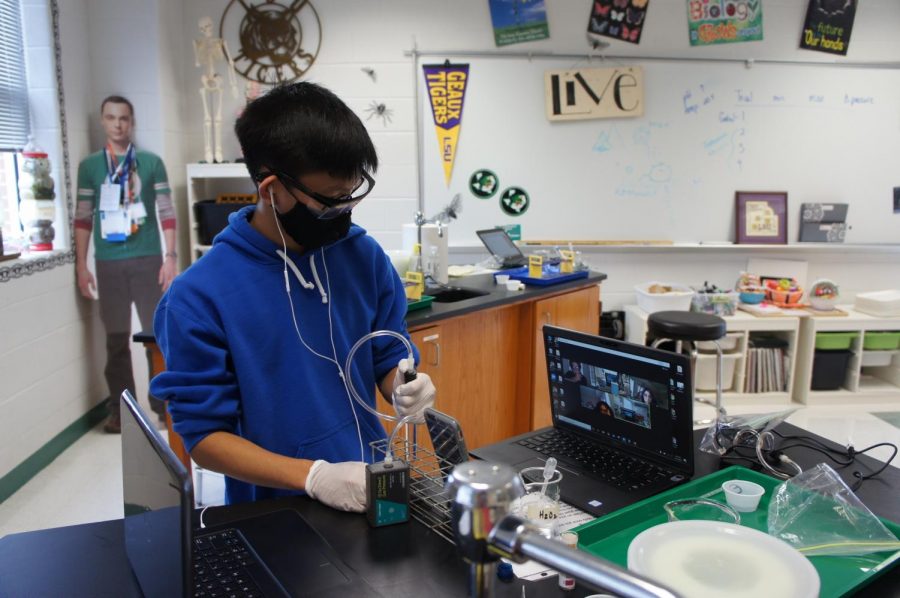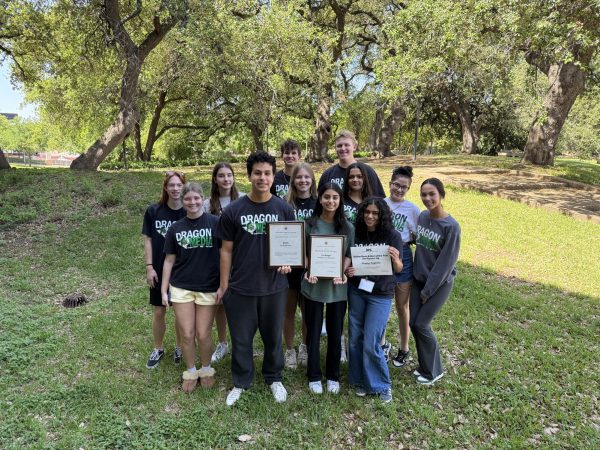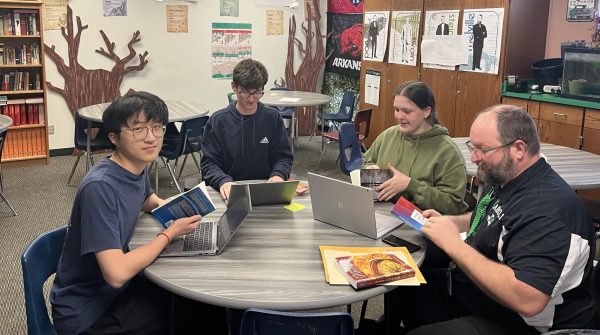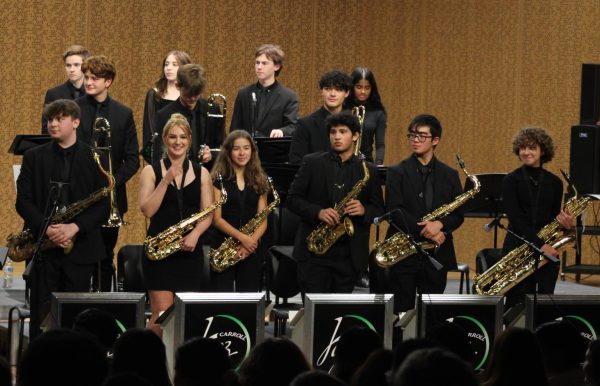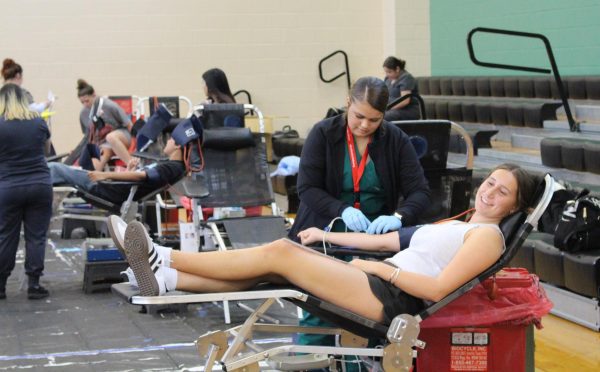Virtual Laboratories
How Carroll ISD science classes are handling virtual experiments
Brendan Wu (9), performs the enzyme lab in Ms. Keeley Lowery’s AP Biology class on Sept. 23. In-person students were sent into breakout rooms and were responsible for the DVA students getting the information. “I didn’t really do it right and probably got a failing grade, but I had fun,” Kyle Coburn (9) said.
Despite the current COVID-19 crisis, Carroll ISD has made strides in ensuring that all children will receive their proper education and gain the full depth of what their teachers are educating. For some subjects, like Math and English, learning via DVA doesn’t pose as much of a challenge, as many teachers simply will teach on Zoom and have students employ the skills they went over for homework or essays. For science classes, however, things are a little different.
Science classes teach in a very visual medium, with graphs and demonstrations that are crucial for students to gain a full understanding of the lesson. However, performing labs and experiments has been crucial for every science class at Carroll ISD. With more than 1,600 students and counting signed up for remote learning, science teachers are presented with the challenge of ensuring that all students participate and learn, even in the confines of their own home.
Teachers say this year has been relatively challenging, with creating an all new curriculum for their students that still covers all the information that they need to learn.
“I worked all summer thinking we would be some part virtual but the district started adding platforms we were to use; I was so overwhelmed,” AP Environmental Science teacher Linda Lacava said.
Teachers also feel that interactions with their students online are not as strong and cannot create connections with them on a screen.
“Most often I get to know students during our lab activities in AP Chem or AP bio,” AP Bio teacher Sherry Martin said. “Since the majority of my kids elected for DVA, there’s no interaction. I can’t have ‘breakout sessions’ on Zoom to get to know them while my in-person students perform labs.”
Students seem to be having issues with acclimating to their classrooms as well. The disparity between DVA and in-person students and their styles of learning seems to be the cause of many problems. With an inability to do labs and demonstrations, DVA students are limited in how well they can comprehend the information presented. However, many still believe that they can succeed as they have been provided with the tools to do so.
“Learning from home has been a good experience thus far, at least for me, as I have not really had any problems with absorbing the material, even through a Zoom call,” senior Preston Lock said. “The notes that are provided in Canvas are sufficient, I can still ask my teacher questions if necessary, and I get to chill in my room, outside, or really wherever I want, which is obviously a positive. It is true that some teachers are… less technologically capable, per se, which can be troublesome, especially due to the fact that DVA students are entirely reliant on using technology to accomplish school work, but I assume that this problem will be remedied with time.”
Labs are an integral part of science classes, and teachers seem to have differing approaches to tackling this important aspect of the class.
“As a department, we met and decided that we have to do some hands- on labs,” Mrs. Lacava said. “Any DVA student can e-mail Mr. Duhon and they can come in for that lab day. I am handling labs just like years past. If a student was absent for a lab, I gave them the data to work out the lab questions or I will give an alternative assignment for the lab.”
The teachers believe that even with the lack of communication and students being unable to partake in labs, students are doing well in their classes and seem to understand the lessons.
“I do feel the students on both platforms that want to learn are grasping my lessons,” Mrs. Lacava said. “This year is no different from others in that way. This is like a college online class now. Students are required to take the responsibility to be engaged.”
The district has also allowed leniency for the educators, allowing them to teach in their own ways.
“Once our campus admin said ‘do what you are comfortable with,’ I [felt] better,” Mrs. Lacava said.
Even in this trying time, teachers still want their students to succeed and want to prepare them for the future.
“I am focusing on content and how best to prepare kids for the AP exams in the spring,” Mrs. Martin said. “This means in-class students perform the lab and data collection. DVA kids are provided with data to complete the analysis… that is the best use of everyone’s time and to ensure all students receive equal help from labs and resources.”
